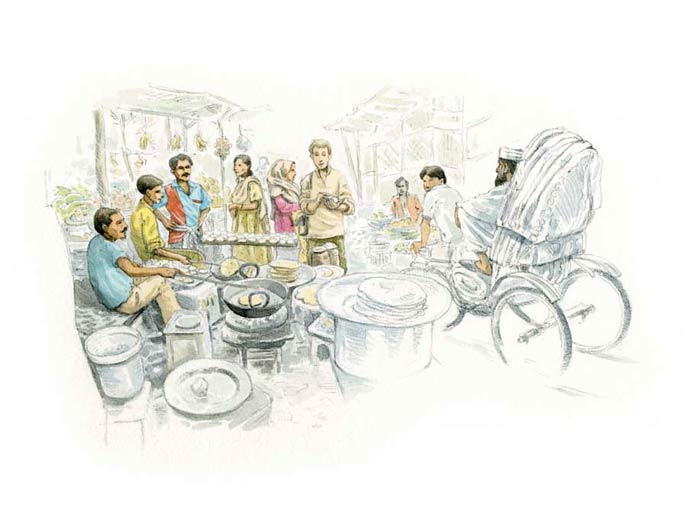Luchi

Form: Small ball-shaped bread
Country of origin: Bangladesh
What distinguishes it from other methods of bread making: Deep-fried in oil
Category of bread: (2 and 7) Luchi is one of the most seductive breads in this category of fried breads, next to Afghan katlama and Indian puri
Particularity: The inhabitants of Bangladesh brought it from Bengal, where most of them came from
Ingredients: T45 wheat flour (maida); ghee (clarified butter); salt; water

Bangladesh
The partition of India in 1947 made it possible for Indian Muslims to divide themselves between Pakistan to the west and Bangladesh to the east. For all that, none of these peoples, displaced and manhandled by the Partition, was able to cut off ties with their ancestors in the homeland. The same obviously goes for current culinary practices in Bangladesh, which borrow very heavily from those of the Indian continent, and in particular on those of Bengal, where the vast majority of Bangladeshis came from.
Luchi – an Indian bread found in both Pakistan and Bangladesh and even more distant places – proudly lays claim to its Bengali origin. It more closely resembles a fritter than bread, but is used as bread for a long list of purposes. It consists of a wheat flour dough to which is added ghee (clarified butter), to which no sugar is added, which contributes even more to the argument that it should be put into the category of bread. Luchi is shaped into dough rolls flattened with a rolling pin and dropped into hot oil. Like other flat breads put on concave metal plates level with the flame, luchi turn golden brown and becomes round while cooking; its skin forms blisters here and there.
This “anatomy”, if we can call it that, naturally contributes to making it an excellent base for all sorts of garnitures. It can be filled with mashed legumes, and then becomes a kochuri. Stuffed or not, it serves as an excellent breakfast, or as an appetite suppressant during the day, or even as a light meal.

